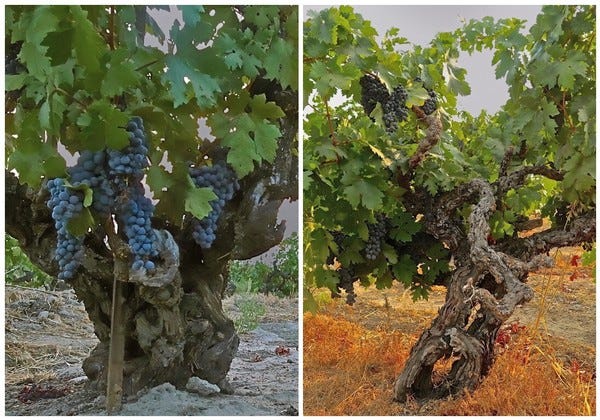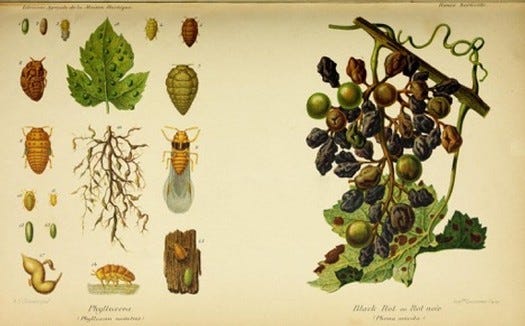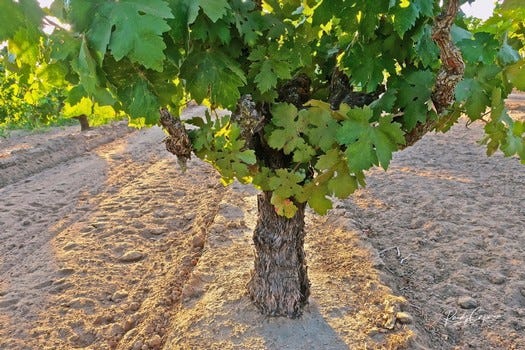Are own-rooted grapevines superior to grapevines grafted on rootstocks?
Observations based upon the Lodi, California experience
First, on a personal note: My work with the Lodi Winegrape Commission, consisting of the over 750 winegrowers in the Lodi Viticultural Area, comes to an end at the end of this month (June 2025), after 15 years. A good chunk of my life, and a very fruitful one of that. Where else can fundamental questions such as the significance of own-rooted grapevines be addressed with firsthand authority? In Lodi, of course, where there is more acreage of own-rooted vines than anywhere else in America. I hope you enjoy this post, one of my last composed for the Lodi grape farming community.

Burning questions
When wine buffs talk about the great wines of the world, they often talk about terroir, an important term of French origin that entails the natural environmental factors—such as climate, soil, topography, aspect, elevation, latitude, etc.—that have a direct effect on grapevine growth, and ultimately on the taste of wines. While terroir is more than about natural conditions—the hand of man also plays a big part of winegrowing—soil plays a crucial role.
Because the closest part of any plant to the ground is its root system, another hot topic of discussion when it comes to grapevines is rootstocks. That is to say, the rooting habits of specifically chosen rootstock selections that might be favorable to a site's soil, or to meet specific objectives such as drought tolerance, disease and pest resistance, grapevine vigor, canopy growth, a targeted average cluster weight, and a host of other concerns.
When consumers shop for wine, of course, rootstocks are the last thing on their mind. All the same, rootstocks are an important subject for farmers or vineyard owners, whose job is to deliver high quality grapes to wineries or winemakers.
For well over a century, rootstocks have also been a burning question throughout the wine industry, all around the world.
Reason: In the latter half of the nineteenth century, the microscopic root louse infamously known as phylloxera killed off vineyards almost everywhere else in California and most major wine regions around the world. No country was spared. This catastrophic event necessitated the grafting of phylloxera-resistant rootstocks, primarily derived from native American species (Vitis labrusca).
Phylloxera, however, does not thrive in sandy soils (for deeper reading, see our post on Impact of phylloxera on Lodi’s vaunted old vines and their natural defenses).
For this reason, the situation in Lodi has always been different from anywhere else in California; mostly because pioneering nineteenth century growers always chose to plant in farmlands surrounding the City of Lodi marked by extremely deep, and rich, alluvium with a high sand content, and no hardpan even at depths below 50 feet.
Why? Because that’s where grapevines of Mediterranean origin—particularly varieties such as Zinfandel, Cinsaut, Carignan and Flame Tokay—seemed to set healthy, deep rooting systems sooner, and produce the highest quality grapes. A simple case of observation and conclusion.
Keep reading with a 7-day free trial
Subscribe to The Wine Clarion by Randy Caparoso to keep reading this post and get 7 days of free access to the full post archives.




